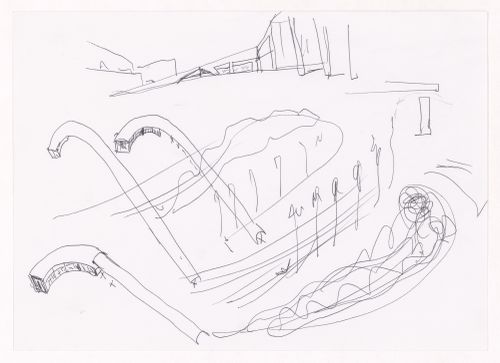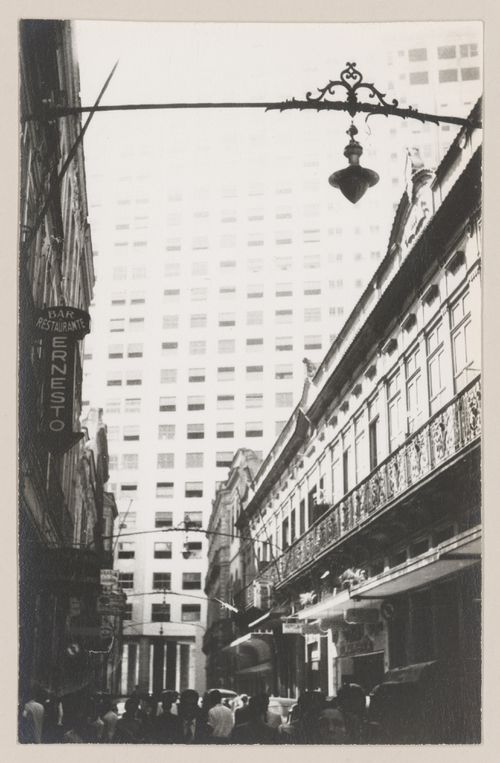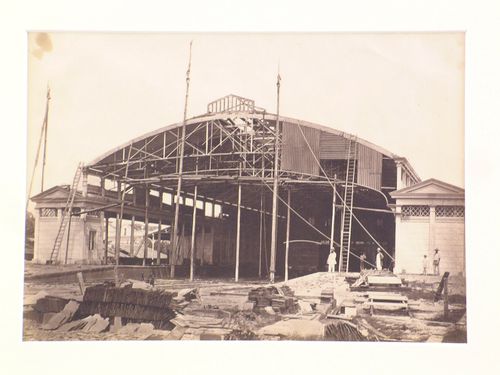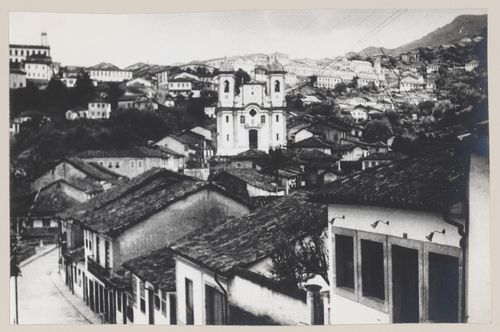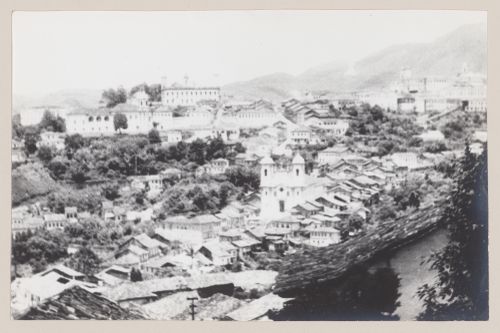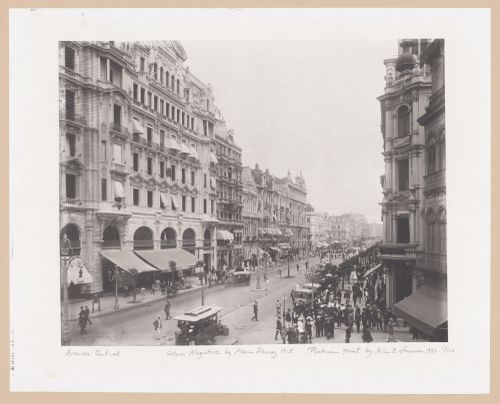DR2001:0005:259
Description:
This building is also known as JK Building, Edifício JK or Conjunto JK; comprising two large buildings, namely Block A and Block B.
1950-1951
View of model for Governor Juscelino Kubitschek's Complex, under construction, Belo Horizonte, Brazil
Actions:
DR2001:0005:259
Description:
This building is also known as JK Building, Edifício JK or Conjunto JK; comprising two large buildings, namely Block A and Block B.
Sketch axonometric views and perspective for Estudo Urbanístico da Lagoinha, Belo Horizonte, Brazil
ARCH290522
circa 1994-1998
DR2001:0005:017
1953-1954
Streetview of Rua Miguel Couto towards Presidente Vargas Avenue, Rio de Janeiro, Brazil
Actions:
DR2001:0005:017
PH1981:0328
5 August 1861
Bahia Station under construction, view of north end train entrance, Bahia State, Brazil
Actions:
PH1981:0328
photographs
PH1980:0160
ca. 1895
View of Santa Casa de Misericórdia looking down street, Rio de Janeiro, Brazil
Actions:
PH1980:0160
photographs
ca. 1895
textual records
Project guidance manual, Recualificación del espacio público de Ramos, Rio de Janeiro, Brazil
ARCH271030
Description:
In Portuguese.
October 1997
Project guidance manual, Recualificación del espacio público de Ramos, Rio de Janeiro, Brazil
Actions:
ARCH271030
Description:
In Portuguese.
textual records
October 1997
DR2001:0005:180
1953-1954
View of Parish Church of Our Lady of the Conception of Antônio Dias, Ouro Preto, Brazil
Actions:
DR2001:0005:180
DR2001:0005:181
1953-1954
View of Parish Church of Our Lady of the Conception of Antônio Dias, Ouro Preto, Brazil
Actions:
DR2001:0005:181
Project
AP178.S1.1998.PR07
Description:
This project series documents the C. Cultural e Audit. para a Fundação Ibere Camargo in Porto Alegre, Brazil. While the records were held in the office’s archives this project was assigned the number 102/90. The office assigned the date 1998 to this project. At the end of the nineties, an architectural competition was held for the construction of a new building for the Iberê Camargo Foundation. The foundation holds the archives and work of the Brazilian painter Ibere Carmargo, as well as hosts temporary exhibitions and seminars. The project site is located near the Guaíba River, between a cliff and the Avenida Padre Cacique. Collaborators on the project were Barbara Rangel, Pedro Polonia, Michele Gigante, Francesca Montalto, Atsushi Ueno, Rita Amaral, José Luiz Cana, and Camargo Correa. The three-stories building is 88,000 square feet and includes nine galleries, storage spaces, offices, a bookstore, an auditorium, and a video library. Each of the galleries is independent but linked via a system of ramps. One of the unique qualities of the building are the ramps that come out of its concrete façade. Due to the limited space, the parking was built below the Avenida Padre Cacique. The building respects the concept of sustainable development, with a sewage treatment station that redistributes the water to the surrounding vegetation. The museum was Siza's first built project in Brazil and it was inaugurated in 2008. Siza received the Golden Lion award at the Venice Architecture Biennale in 2003 for this project. Documenting this project are sketches, studies, preliminary drawings, working drawings, technical drawings, and electrical drawings. Textual material includes project documentation, correspondence, and documentation regarding exhibitions about the building. Photographic material documents the models, project site, and built project.
1998-2006
C. Cultural e Audit. para a Fundação Iberê Camargo [Iberê Camargo Foundation Museum], Porto Alegre, Brazil (1998)
Actions:
AP178.S1.1998.PR07
Description:
This project series documents the C. Cultural e Audit. para a Fundação Ibere Camargo in Porto Alegre, Brazil. While the records were held in the office’s archives this project was assigned the number 102/90. The office assigned the date 1998 to this project. At the end of the nineties, an architectural competition was held for the construction of a new building for the Iberê Camargo Foundation. The foundation holds the archives and work of the Brazilian painter Ibere Carmargo, as well as hosts temporary exhibitions and seminars. The project site is located near the Guaíba River, between a cliff and the Avenida Padre Cacique. Collaborators on the project were Barbara Rangel, Pedro Polonia, Michele Gigante, Francesca Montalto, Atsushi Ueno, Rita Amaral, José Luiz Cana, and Camargo Correa. The three-stories building is 88,000 square feet and includes nine galleries, storage spaces, offices, a bookstore, an auditorium, and a video library. Each of the galleries is independent but linked via a system of ramps. One of the unique qualities of the building are the ramps that come out of its concrete façade. Due to the limited space, the parking was built below the Avenida Padre Cacique. The building respects the concept of sustainable development, with a sewage treatment station that redistributes the water to the surrounding vegetation. The museum was Siza's first built project in Brazil and it was inaugurated in 2008. Siza received the Golden Lion award at the Venice Architecture Biennale in 2003 for this project. Documenting this project are sketches, studies, preliminary drawings, working drawings, technical drawings, and electrical drawings. Textual material includes project documentation, correspondence, and documentation regarding exhibitions about the building. Photographic material documents the models, project site, and built project.
Project
1998-2006
PH1983:0298:010
ca. 1880
View looking down on Central Avenue, cars and people on street, Rio de Janeiro, Brazil
Actions:
PH1983:0298:010

